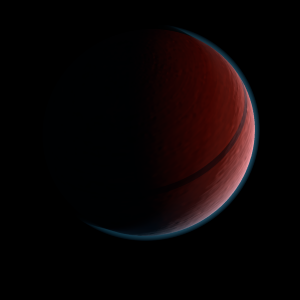|
|
Space Astro
|
Info for exoplanet "Dada'chusho Gi"
| Scientific (actual) data |
|---|
| Name | HD 208897 b |
| Planet status | Confirmed |
| Mass sini | 1.4 |
| Orbital period | 352.7 |
| Semi major axis | 1.05 |
| Orbit eccentricity | 0.07 |
| Discovered | 2017 |
| Updated | 2017-08-09 |
| Omega | 167 |
| Tperi | 2455040 |
| K | 34.7 |
| Publication | Published in a refereed paper |
| Detection type | Radial Velocity |
| Mass measurement type | Radial Velocity |
| Star name | HD 208897 |
| Right ascension | 329.75° |
| Declination | 19.02° |
| Mag v | 6.51 |
| Star distance | 64.68 |
| Star metallicity | 0.21 |
| Star mass | 1.25 |
| Star radius | 4.98 |
| Star sp type | K0 |
| Star temperature | 4860 |
| Star alternate names | HIP 108513 |
| Wikipedia article | HD 208897 b |
Back
| |
| Fictional info (?) |
|---|
| Suggested name | Dada'chusho Gi |
| Planet type | Cold planet |
|
| Atmosphere | Hydrogen peroxide | 67% |
| Hydrogen | 14% |
| Helium | 9.9% |
| Nitric oxide | 4.6% |
| Xenon | 3.2% |
| Hydrogen chloride | 0.16% |
| Formaldehyde | 0.0082% |
| Atmospheric pressure | 18 bar |
 |
| No known satellites |
| Google search for Dada'chusho gi |
|
Website by Joachim Michaelis
|
|
|
|